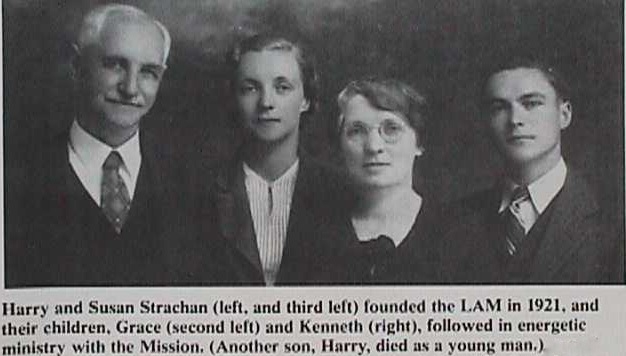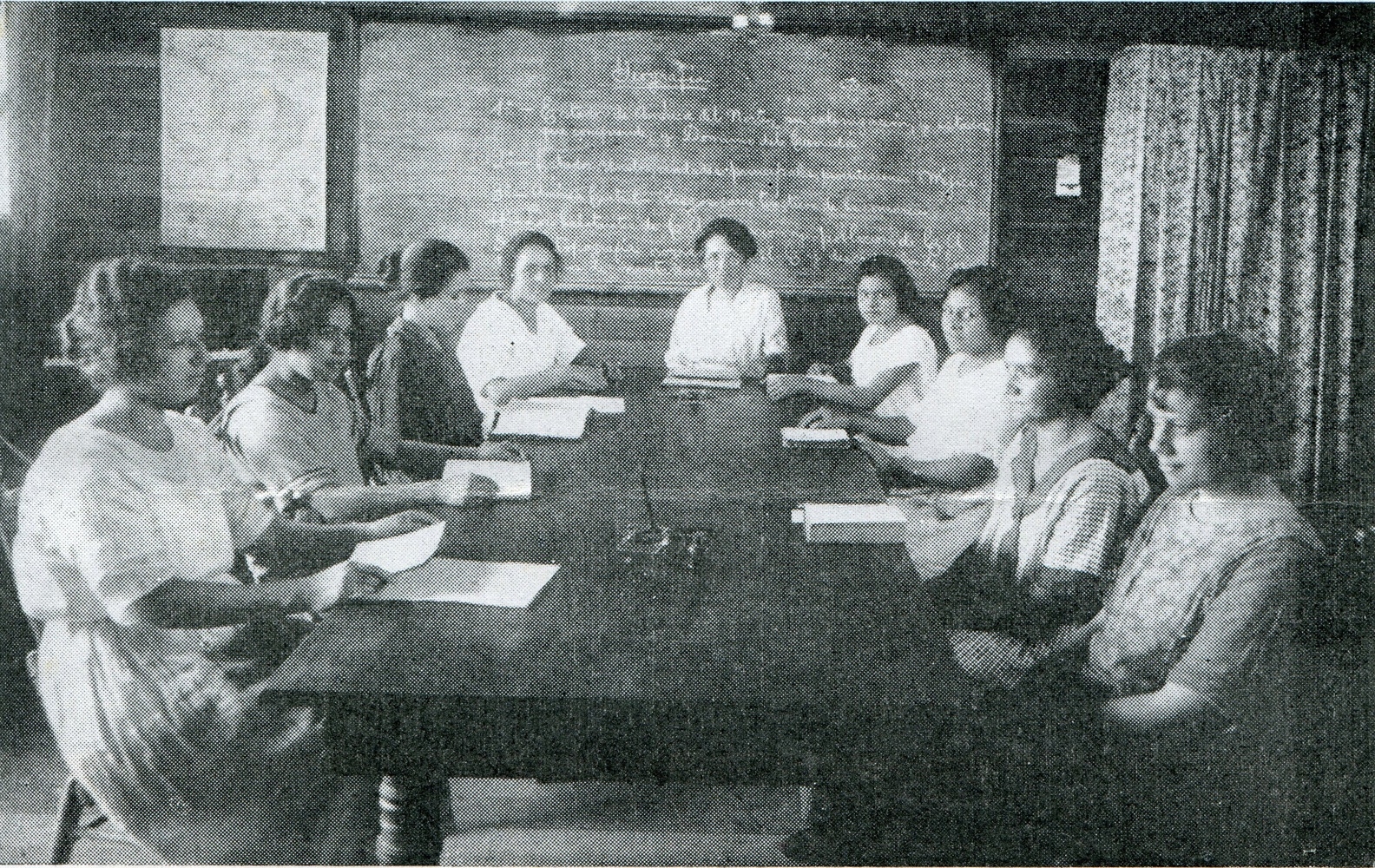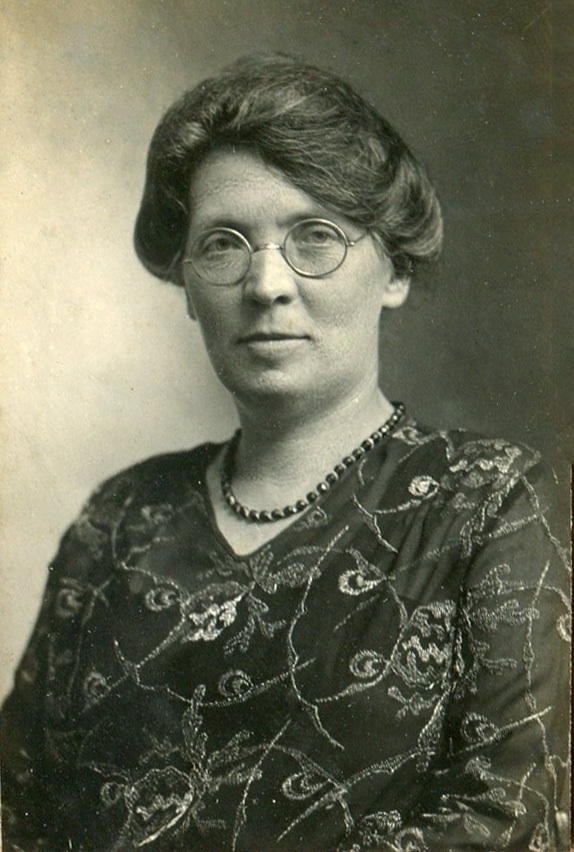|
A large, beautifully carved statue of an indigenous woman
reading the Bible sits proudly in the entrance hall of the
Latin American Bible University (Universidad Biblia
Latinoamérica) in San José, Costa Rica. The ethos of the
university is to teach theology from the perspective of
Women, the Indigenous and the Poor. It offers courses in
pastoral and biblical theology to students who come from
across Latin America and some even from Africa and Europe.
Ecumenical in outlook, a Protestant can be preparing for
ordination alongside a Catholic Religious studying for her
Masters.
Passing
the statue and taking the stairs leads one to the Henry
Strachan Library, a theological resource centre that also
serves the satellite colleges which the Bible University has
across Latin America. The library is named after the
University’s co-founder, whose benign black and white
picture smiles down from the library walls next to that of
his co-founder and wife, Susannah Strachan (née Beamish).

Susannah Beamish was born near Dunmanway, Co. Cork on 28
April 1874. Although her family attended the local Anglican
(Church of Ireland) church, Susannah started to attend the
small Methodist congregation nearby in her youth. Having
made a commitment to Christ at the Methodist church, she
worshipped with her family at the Anglican church in the
mornings, and she attended the Methodist church in the
evenings (Smith 2001:71), She left Ireland to study at the
East London Training Institute for Home and Foreign Mission
established in Harley House, Bow Road, and then at Hulme
Cliff College, Derbyshire. In these Evangelical Protestant
training colleges she met her future husband, Henry Strachan
(1872-1945). Henry was born in Fergus, Ontario, to Scottish
parents, who returned from Canada to Aberdeen when Henry was
seven years old. Later, in response to the sternness of his
father, the young Henry Strachan ran away from home to
England. There, at about the age of twenty he heard the
preaching of the Irishman, Henry Grattan Guinness
(1835-1910), which had a profound impact upon him. He, too,
studied at Harley House and Hulme Cliff College where he and
Susannah had separately planned to serve in Central Africa
as missionaries in Guinness’s ‘Congo Balolo Mission’. To
this end, Henry Strachan was studying medicine and Susannah
Beamish was studying nursing. During this time, Henry
proposed to Susannah only to be turned down. She also
informed him that she was disqualified for health reasons
from service in the Central African climate and was being
sent instead to Argentina by the Regions Beyond Missionary
Union. Henry seemed to accept that they were not to be wed,
until he too, because of a congenital heart problem, was
disqualified from service in the Congo and redirected to
Argentina under the Regions Beyond Missionary Union (Smith
2001:72).
In 1899, at the age of twenty five, Susannah Beamish set
sail for Argentina. Three years later, Henry Strachan joined
her, and on 15 June 1903 they married. They settled in
Tandil, in the south west of Buenos Aires province, where
they established a church and where their three children
were born: Kenneth, Grace and Harry. The couple lived in
Tandil for the next fifteen years, where Susannah founded
both the ‘League of Evangelical Women’ (Liga de Mujeres
Evangélicas) and the newspaper, Guía del Hogar.
It was during this period that the 1910 Edinburgh Missionary
Conference took place. This Conference largely sidestepped
the possibility of Protestant mission work in Latin America.
This led to the subsequent 1916 Panama Congress on Christian
work in Latin America. During these years, the Strachans
began to think of a continent-wide mission work, and became
members of ‘The Evangelical Union of South America’, founded
in Keswick, England in 1911. Those to whom they were
responsible in Argentina and Britain were not in a position
to support the Strachans's vision of a continent-wide
mission. Dr. Henry Guinness had died, leaving debts of
£10,000.
In 1918, Henry and Susannah Strachan travelled to the United
States in what turned out to be a largely unfruitful bid to
gain financial support for a Latin American-wide mission.
Nonetheless, Henry did serve for a while at Hepzibah House,
New York, where the evangelist A. B. Winchester (1815-1943)
was based. Winchester, who alone provided the Strachans with
some financial help, was a Canadian who played a significant
role in the creation of the fundamentalist movement. At this
time, they disaffiliated themselves from the Evangelical
Union of South America, and, in 1920, the couple began a
year-long tour of Southern and Central America, from
Guatemala back to Argentina. It was after much
soul-searching that Susannah embarked on the trip, leaving
their three children in the care of three families in Kansas
City Missouri (Smith 2001:75). This tour took them to many
and varied places, including San José in Costa Rica. It was
in San José that they felt that they had found an ideal
location to launch a continent-wide mission, as it had
railway links to both the Atlantic and Pacific oceans, the
former completed late in the nineteenth century, the latter
in 1910. On 24 July, 1921, with a group of interested
friends, they founded the ‘Latin American Evangelisation
Campaign’ (LAEC) at Stony Brook School, New York. Within
four months, the family had settled in San José, and the
work was divided between husband and wife, Susannah taking
responsibility for building up the base of the work in and
around San José whilst her husband left, in the company of
Juan Varetto, to initiate the continent-wide evangelisation
campaign. Henry’s first tour, to Guatemala, began within
days of the family’s arrival in San José. Henry left
Susannah to unpack, and left her with US$100 plus a cheque
which he had forgotten to endorse (Smith 2001:77). She seems
to have coped admirably with caring for both the family home
and the establishment of the work in San José.
The Latin American Evangelisation Campaign (now Latin
American Mission) used the leading evangelical preachers of
the day to address campaigns that were held in the majority
of Latin American countries during the next fourteen years.
Henry Strachan became known as ‘El Caballero Andante de
América Latina’.
Back in San José, Susannah Strachan founded the Escuela de
Capacitación para Mujeres Jóvenes (School for the Training
of Young Women), now the Universidad Biblia Latinoamérica,
on 2 October, 1922. The first students, all of whom were
from Central America, were: Olivia Rodríguez, Angela
Santamaría, Concha Escobar, Piedades Gómez, Betty Campos,
María Pineda, Isabel Zúñiga and Fanny Hogg. In 1923, it
became known as the Instituto Bíblico de Costa Rica and then
in 1941 as Seminario Bíblico Latinoamericano. Susannah
insisted that the first students were women. She offered a
two-year programme of instruction on courses on the Old and
New Testaments, Christian Doctrine, Bible History,
Homiletics, “Dispensational Truth, organ and singing, sewing
and housework as well as practical evangelistic work” (Smith
2001:89, quoting S. Strachan 1923:a:7). Men did not enter
the institute for another two years. Once it was recognised
that Henry’s plans for the training of male pastors in
situ., through programmes linked to his itinerant missions,
was not going to work, Henry wrote to Susannah from
Nicaragua asking her if she could accommodate ten male
students (Smith 2001:95). She could but the first
graduation in 1926 was all female. Each weekend, students
were sent out from the institute to evangelise and organise
within the barrios of San José and within communities across
the different regions of Costa Rica. In Santa Cruz, as a
result of this work, the first ‘Bible Church’ was later
founded.


In 1922 and 1927 two evangelistic campaigns were held in
Costa Rica under the direction of LAEC. In the first of
these, a theatre was hired to facilitate those who wanted to
attend, but did not wish to enter a Protestant church
building. Thousands attended meetings over a nine day
period, including people from the middle classes: teachers,
lawyers, and government officials. There was generally a
very positive response to the programme. The following
campaign, however, was very differently received.
By now Susannah Strachan’s seminary was well-established and
the Protestant evangelism, under her direction, became more
aggressive. Indeed, Catholic clergy organized opposition
when a Puerto Rican Presbyterian preacher was booked as the
main speaker at a hall that held one thousand people,
opposite the prestigious Europa Hotel in San José. The
success of the evangelistic campaign led to the purchase of
property two blocks to the west of the Central Park, which
was converted into a tabernacle that could hold a thousand
people. It was formally dedicated on 3 January 1930. Two
months later, Father Rosendo de J. Valenciano organised a
two thousand person strong march to this tabernacle and
celebrated the Eucharist outside, on an altar carried there
for the purpose, in opposition to this ‘house of heresy’. In
more recent years, the Bible University of Latin America has
embraced an ecumenical theology of liberation and the Latin
American Mission has broken its historic ties with the
seminary because of their differing theological
perspectives. The Bible University receives support today
instead from The United Methodist Church (USA) and the
Methodist Churches of Britain and Ireland, among others.
Susannah Strachan also founded the Hospital Clínica
Bíblica (Bible Hospital Clinic), under the auspices of
the Latin American Mission. On arrival in Costa Rica, the
Strachans were concerned about the poverty of the local
health services and the disturbing level of infant
mortality. For every 1,000 babies born each year, 350 died
in infancy, 50 per cent before they reached the age of five.
Poor nutrition and the abandonment of babies constituted the
biggest problems. In general, the life expectationwas
just forty years, with tuberculosis and malaria wreaking
havoc, among other illnesses. The Strachans organised the
importation of essential medical supplies and Susannah
established the Bible Hospital Clinic as a paediatric
centre. It soon developed into a hospital that also offered
maternity care, surgery and a nursing school. Now
independent from the Latin American Mission, it is today one of
the leading hospitals of Costa Rica, albeit with a private
ethos that could be considered far from the founding vision
of Susannah Strachan.
Following the devastating San José train crash of 16 April
1926, in which 178 pilgrims died, Susannah Strachan set up
the Bible Orphanage (Hogar Bíblico Para Niños), which
still operates today under direct government control.
Together with her husband, Susannah Strachan founded, in
1937, La Asociación de Iglesias Evangélicas del Caribe
(the Association of Evangelical Caribbean Churches), which
established churches along the Caribbean coast of Colombia,
where the Strachans had made a number of visits. On 23
February 1948, Susannah was invited to connect the
electricity to launch the first broadcast of the evangelical
radio station, Faro del Caribe. Upon the death of her
husband in 1945, Susannah Strachan became joint director of
the Latin American Mission, with her son Kenneth. She
continued in this role until her death on 5 December 1950.
Influenced as she was by fundamentalism and an aggressive
form of evangelical Protestantism, it would be interesting
to see her reaction to the ecumenism and Liberation Theology
which underlie the ethos of the Bible University of Latin
America today. Yet, to be fair, even in the pre-Vatican II
world in which the Strachans operated, they tried not to
publicly criticise Catholicism, but rather present a
positive Evangelical Protestant message. Moreover, unlike
many evangelicals of their day, they saw no incompatibility
between evangelicalism and social action. Furthermore, the
Strachans were ahead of their time in their insistence of
the use of indigenous leadership. Latin America and its
theology have changed much in the pastyears
yet this university, with its desire to offer theology from
the perspective of women, the indigenous and the poor, is
the same institution that was founded by Susannah Strachan.
This remarkable Irishwoman insisted that the first students
be female and dedicated her life, her spiritual zeal and her
medical knowledge to people struggling with poverty,
sickness and spiritual needs in lands far from the shores of
her native County Cork.
*
With thanks to Señor Álvaro Perez Guzman, Head
Librarian, Henry Strachan Library, Latin American Bible
University, San José, Costa Rica.
Sources
-El
Legado De Susana Strachan
(Recopilación
de varias fuentes).
Available from Henry Strachan Library,
Universidad Biblia Latinoamérica
,
San
José, Costa Rica.
-Guzman, Álvaro Pérez, ‘The Library of the Universidad
Bíblica Latinoamericana; 75th Anniversary in the midst
of changes’, in Theological Librarianship (An Online
Journal of the American Theological Library Association),
Volume 4, No.1, July 2011, 8-15.
-Smith, Randal David, Rethinking the Latin America
Mission: Utilizing Organizational History to Inform the
Future (Presented to the Faculty of the E. Stanley Jones
School of World Mission and Evangelism in partial fulfilment
of the requirements for Ph.D; Asbury Theological Seminary,
Wilmore, Kentucky. May 2001)
http://templobiblico.com/historia.html
http://www.clinicabiblica.com/esp/historia-hospitales-privados-costa-rica.html
http://iglesiasaiec.com/index.php?option=com_content&view=article&id=2&Itemid=3
http://www.farodelcaribe.org/web/index.php?option=com_content&view=article&id=92&Itemid=165
http://www.lam.org/about/history/
Historia de la Biblioteca de la UBL,
video
showing the Strachans:
http://www.youtube.com/watch?v=A5LNHG2pH2I
|
